- Best Stump Grinder Replacement Teeth - September 25, 2022
- How to Find the Best Log Splitter Wedge - September 11, 2022
- How to Find the Best Portable Winch for Logging - September 11, 2022
I had to get intimately familiar with the log splitter wedge and the sledgehammer during my first winter in the snow.
I liked the sledgehammer; it felt like a workout meant for the Gods. That familiarity, mixed with a lot of movie-watching where muscled men split logs with nothing else to diffuse their emotions, I was ready to do my part; my family had done the majority of the log splitting for our fires that year.
As I lifted the sledgehammer and felt my arms move down the handle properly, I was distraught when it did not make a lick of difference in the stump. My family rushed out to stop me and handed me the log splitter wedge.
Apparently, all those muscled men were just showing off; most people used a wedge.
I love the log splitter wedge now that I know how to use it. It’s simple, effective, and does exactly what it should: splits logs into manageable pieces for your fire or for transport. So, how to find the best log splitter wedge? Read on to find out.
Bottomline Upfront
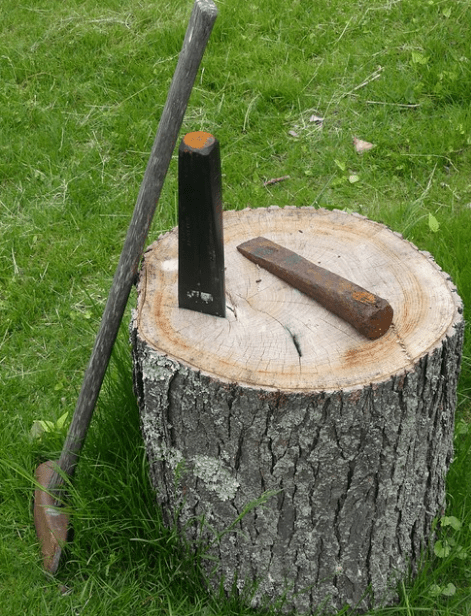
I prefer the Diamond Wedge or Halder Splitting Wedge because of their unique designs. Both are less likely to rebound or get stuck and both maximize your efforts with every swing. With the diamond, you get four directions for your split, and with the Halder, it naturally turns twenty degrees.
How to Use a Splitting Wedge
A splitting wedge is great for breaking apart a length of log that you can’t cut with an Axes, Hatches, or a Splitting Maul. It’s especially useful for any knotty areas.
When you get ready to use a splitting wedge, ensure it goes up and down as the tree grows. You don’t want to try to stick your splitting wedge into a perpendicular angle, or it won’t work.
The idea behind the splitting wedge is to loosen the fibers in your log, and those fibers grow vertically in the tree. Think of it like breaking apart a piece of mozzarella; with the right tools and pressure, you should naturally get stringy sections that pull apart. Of course, those fibers aren’t nearly as soft as string cheese, but the concept is the same.
You want to place your splitting wedge as far in the middle as you can. Sometimes you can’t get it perfectly centered, and that’s okay; you just might have to hit it a few extra times. If you get it centered, you can split your login into two somewhat even sections and weaken the fibers from the middle outward.
If you are working with a particularly tough round of wood, you can place the splitting wedge on one end, hit it to split it, move it to the middle, hit it again, and move it to the other side. Sometimes you have to weaken tree fibers’ outer rings before breaking apart a tough center section.
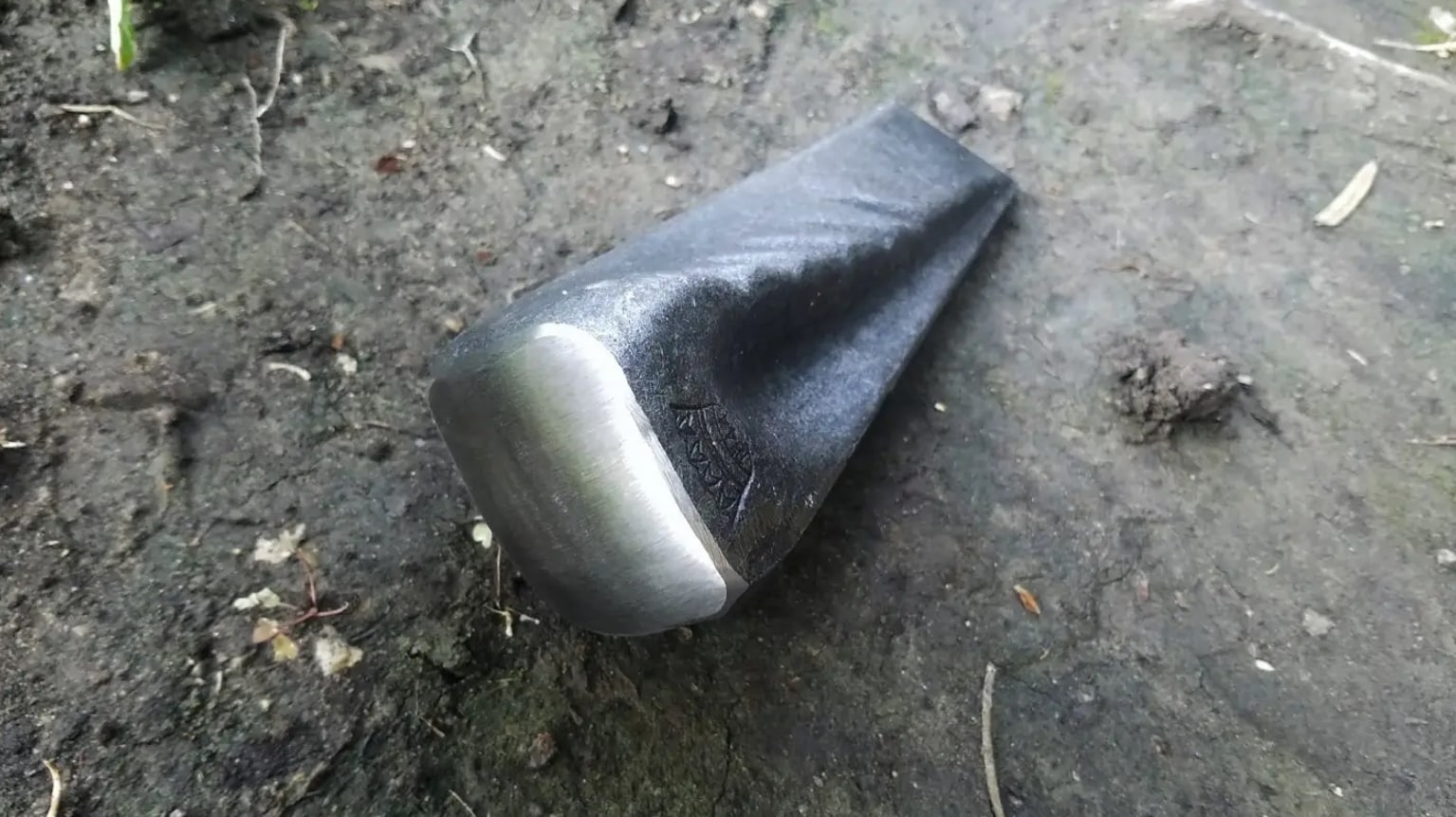
Different Splitting Wedges
Traditional splitting wedges help you split right down the middle. However, you have to hit it perfectly, and it often takes two or three attempts for the wedge to get properly tucked in where you want it.
Diamond splitting wedges are sometimes called “diamond splitters” or “wood grenades,” and these are called such because of their shape. I have a diamond splitter, and I like it because I don’t have to line up the edge. I just stick to the point and hit it. Sometimes the diamond splitting wedge falls out if it isn’t deep enough into the wood.
You can see a video of a diamond splitter below:
Diamond-splitting wedges are great if you have knotty wood because it separates the wood fibers in multiple directions.
Similarly, wood grenades help force the wood round into multiple sections, perfect for firewood. This is a bit easier than using a traditional wedge.
Selection Criteria
Each of the wedges I included in my list was picked based on the material, the design, and the usability. As someone small, I know that the wedge I can handle most comfortably isn’t necessarily up to the task of someone with a large forest on their property who fells regularly. That’s why my top picks come in a wide range, from those you can use around your house to split logs for the fire and those you can use as a pro.
How to Find the Best Log Splitter Wedge: My Top Picks
Estwing

Estwing Sure Split wedge has a unique fin detail on the edge that helps you split more efficiently once you get below the wood line. It also comes with a tapered design on the sharp edge that maximizes the power of the wedge while minimizing the power you have to put forth with each swing.
A bright blue UV coating is allegedly there to strengthen the wedge, but because it is painted, sometimes the blue paint comes off when you are splitting (especially if it is a particularly big log you are splitting). Depending on how much comes off and how you are using the pieces, this may or may not be a problem.
The wedge is five pounds, made from one piece of forged steel, and is nine inches long. For those who prefer locally manufactured products, the Estwing is made in the US.
Pros
- It is crafted from a single piece of forged steel.
- It is made in the US.
- It has a tapered edge to a traditional wedge design.
Cons
- Estwing is not as high quality or as sharp as other models, but it works well and is a reliable piece of equipment for home use.
Hooyman
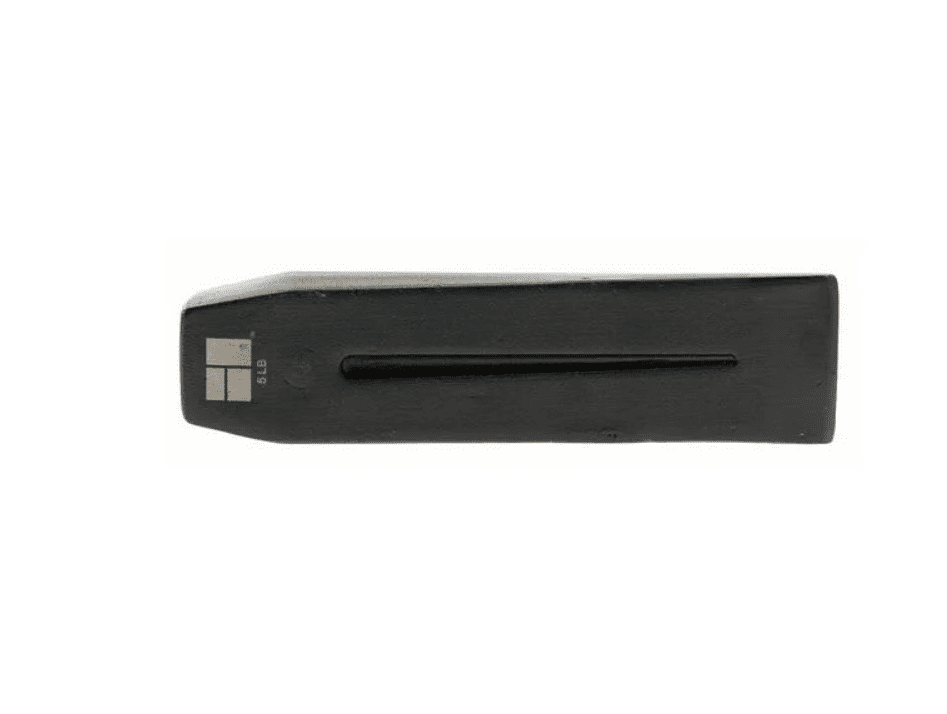
The Hooyman Splitting Wedge is also five pounds and slightly shorter than the Estwing, at 8.75 inches. It has a square, striking head. It is forged steel and comes with a hardness value between 45 and 60. Customer reviews are positive, noting that it works very well and doesn’t seem to have garnered any complaints like the Estwing.
This design is very similar to the Estwing but slightly more durable. It functions the same and has similar design elements to the two ends. It also comes with a lifetime warranty, so should anything go wrong, you can get a new one. What’s more, it isn’t painted blue.
Pros
- It has a lifetime guarantee.
- It has a high hardness value.
- It is perfect for light work around your property.
Cons
- It is shorter than most of the other wedge on this list.
Diamond Wedge
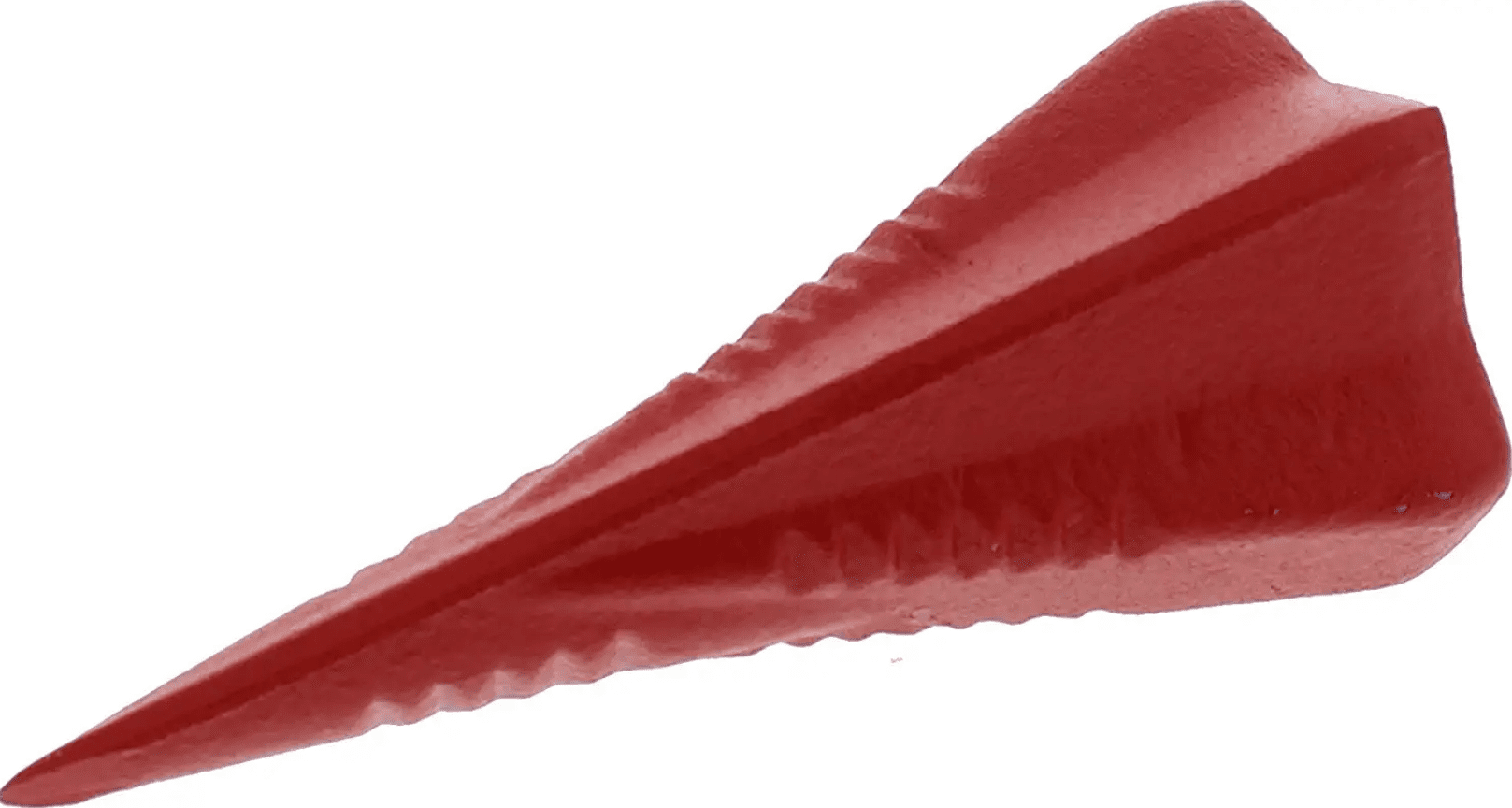
I have the Diamond Wedge, coming in at four pounds. I love that it splits in four directions because most of my log splitting is rounds for firewood. The diamond shape weakens the logs at four angles, so you can split the wood faster than the Hooyman with the flat chisel end.
The spherical striking face makes it easier for me to aim my swing and maximize the power behind it. This is a bit smaller than the other models on this list, at only seven inches long and four pounds, but as a smaller person, I like that.
It is hardened railway steel with a red painted finish that prevents rust and corrosion. I’ve had mine for eight years, left it in the rain, used it in wet wintery weather, and never had any issues with it.
Pros
- It has a painted red finish which prevents corrosion.
- It has a spherical striking plate.
- It comes with a diamond shape that makes the process faster.
Cons
- The downside is this diamond wedge isn’t meant for larger diameter hardwoods or knotty woods, but it works well with a small hammer on walnut, oak, pine, and manzanita.
Collins
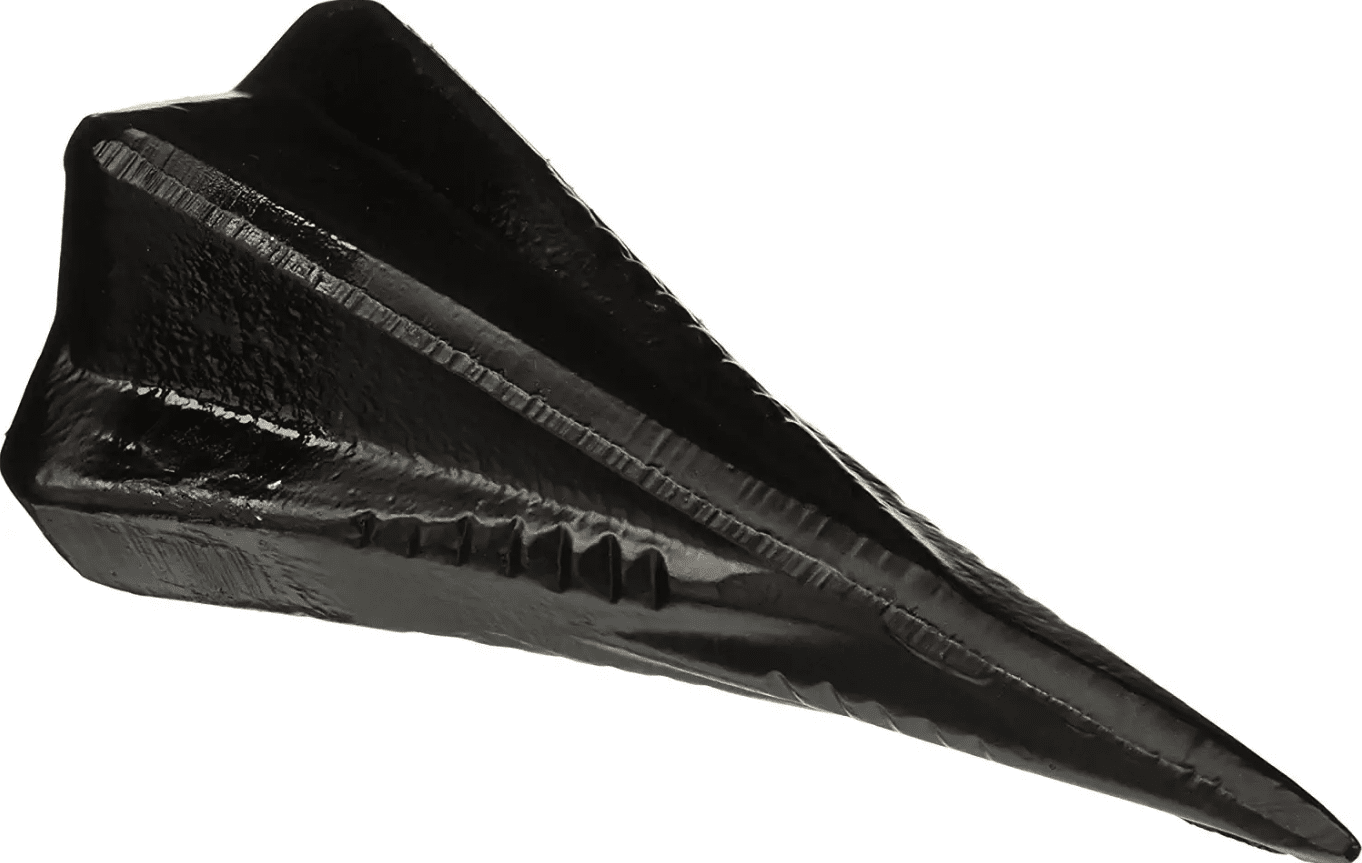
The Collins diamond wedge just looks impressive. It looks like the kind of wedge that when it walks onto the playground, all the other wedges stand back in awe, secretly wishing they could be more like the Collins.
The Collins is one of the most highly recommended by customers, with nothing but positive reviews. The same can’t be said for the other models, which have a nice mix of mostly positive but some negative.
The Collins is a diamond shape, so it splits in four directions. Made from high carbon steel, the twisted shape digs in more efficiently. It is also a bit lighter than the traditional wedges, at 4.5 pounds.
Now, to be clear, when I say it splits in four directions, that does not mean a single hit will split your log into four equally sized pieces. Rather, it means that it will split in half, just like a traditional log splitter wedge, but you don’t have to whack it as much or as hard. It does technically apply pressure in four directions, but it is unlikely you will get four pieces.
Pros
- It is a wide wedge, with a narrow tip, so you get more force behind each swing.
- It is made with high carbon steel.
- It has a twisted shape.
Cons
- It only weighs 4.5 pounds.
Halder
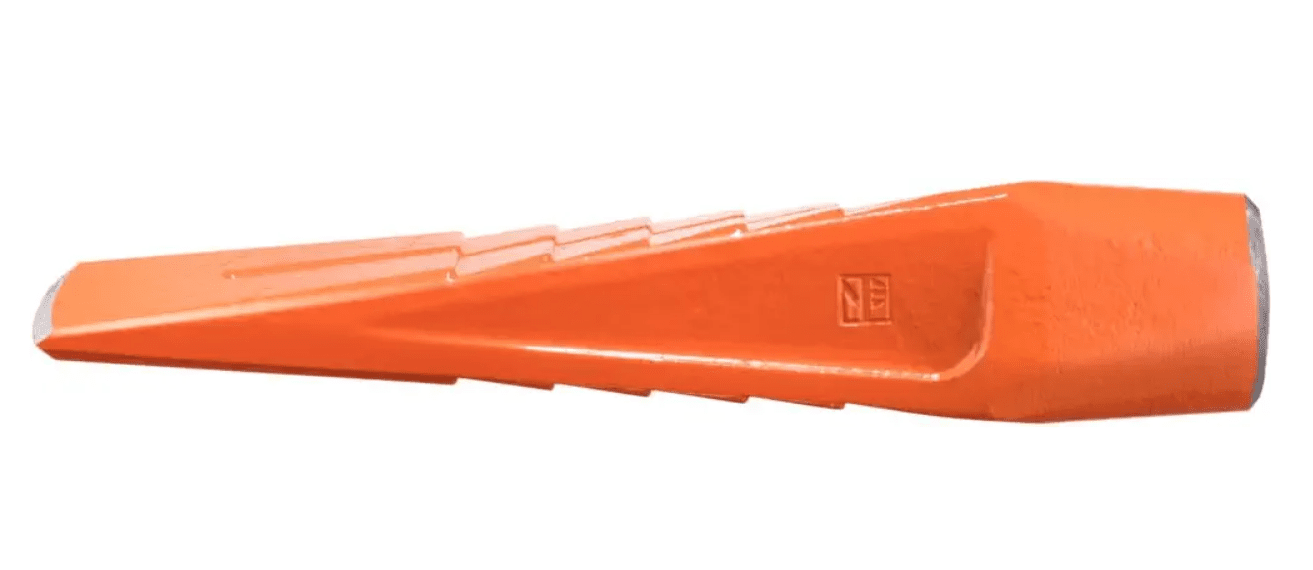
The Halder splitting wedge is a nice compromise between a diamond wedge and the other two flat, chiseled models listed above. It is twisted 20 degrees from the top of the wedge to the bottom. This twisted design helps it drive through your wood a lot easier because each time you strike it, the wedge turns twenty degrees, forcing fibers apart.
This is definitely a step up compared to the other three, made from high-quality German steel, weighing 6.5 pounds. The twisted design prevents it from getting stuck in your logs like the flat designs, reduces friction, and offers a better grip to prevent rebounding (where the wedge pops back out of your log instead of driving down into it).
Pros
- It is a heavy-duty option for more professional needs.
- It has a twisted, twenty-degree design that facilitates easier splitting.
- It is German steel.
Cons
- The only downside is the end isn’t as sharp or as pointed as the Estwing or Hooyman, so it might be a challenge to get started, but once it is jammed in your log, it will split it much faster.
1844 Helko Werk
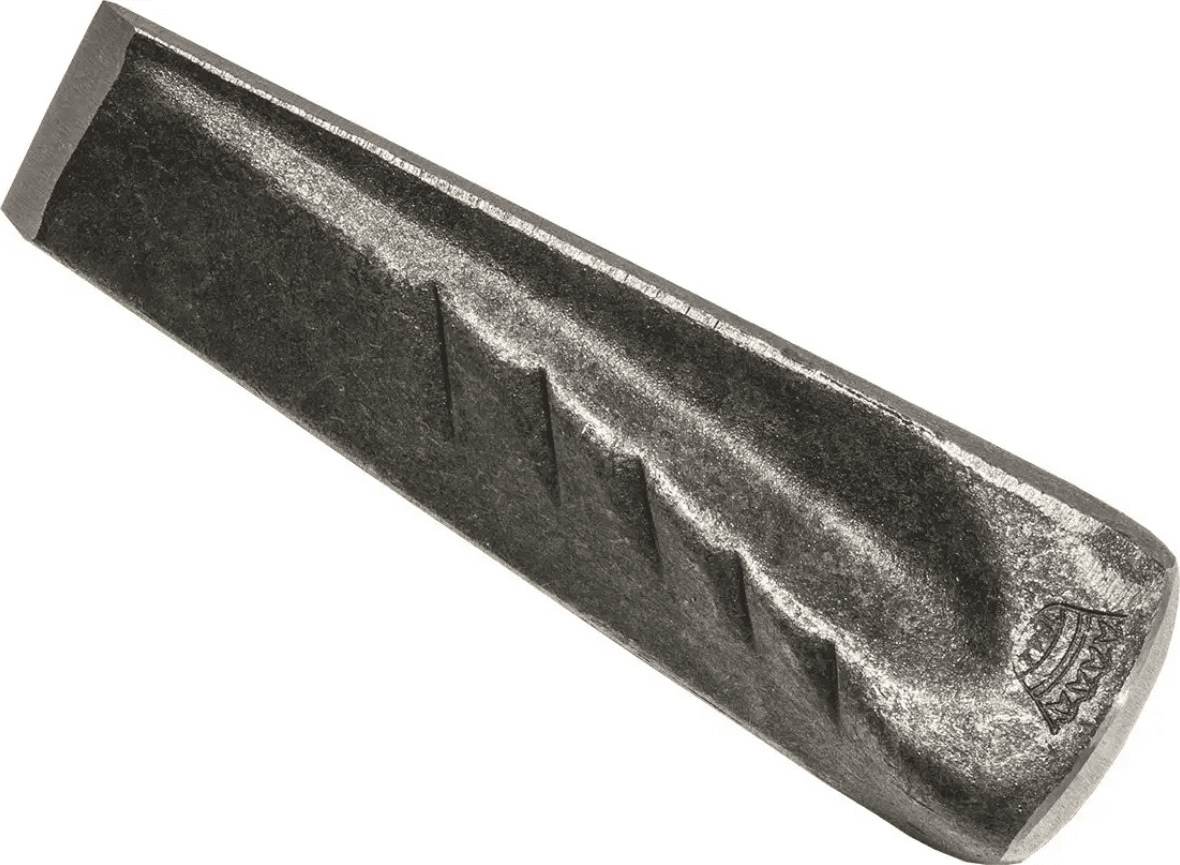
The best for durability and maximum performance is the 1844 Helko Werk. I love German engineering because it is usually much better, held to higher standards, and built to last. German products are not things you expect to break in a few years and replace; they outlive you and your kids.
So, this German 4.5-pound, high-grade carbon steel twisted splitting wedge is definitely at the top of the list for people who split logs regularly. It isn’t what you need to invest in if all you do is split a few rounds here and there for the winter, but if you split rounds all year round, don’t shy away from the investment.
This model has both whereas the other models mostly had twisted designs or a sharp point. It has a twisted design with notches that prevent the wedge from slipping. It also boasts a very sharp tip that is liable to cut you if you aren’t careful.
Pros
- It is heat treated and oil hardened with perfect hardness.
- It won’t mushroom over time.
- It won’t split or crack, no matter how often or how hard you hit it (There is basically nothing this guy can’t do).
Cons
- It is really expensive as far as splitting wedges go.
FAQs
Question: How many splitting wedges do I need?
Answer: You only need one. You can’t really use more than one at a time, so if you are working on your own, one is just fine. I’ve had one for ten years, and since I don’t own more than one sledgehammer, having two doesn’t suit me.
Now, some people argue that having two is good just in case because sometimes your splitting wedge gets lodged in a log and won’t come out. Alternatively, if you are splitting a particularly large section, you can line up more than one wedge and then leapfrog as you hit each one in turn.
If you prefer, you can invest in things like diamond-splitting wedges and traditional wedges for knotty wood, long logs, or rounds for firewood.
Question: Can I use a felling wedge instead of a splitting wedge?
Answer: No. Felling wedges go in the back cut, directing a tree to fall where you want it. They are not supposed to be hit repeatedly and are usually made from a cheaper plastic. Splitting wedges are made from steel and are meant to take a beating.
Question: Does my splitting wedge need to be sharpened?
Answer: Don’t go setting up your sharping tools just yet. You aren’t using a splitting wedge to cut into the wood, so it does not need a razor edge. Rather, you need the wedge to transfer the kinetic energy of your downward swing to force all the fibers in the wood apart. It, therefore, doesn’t have to be sharp enough to cut, but it should be sharp enough to penetrate and remain fixed in place.
A good rule of thumb: once you buy a splitting wedge, it shouldn’t need sharpening at all unless you somehow damage the tip and need to file it back down.
Question: How large of a log can a log splitter wedge handle?
Answer: Any size, as long as you have multiple wedges for leapfrogging or are willing to take the time required to hit the wedge, remove it, hit it again, move it down, and so on. Remember, the wedges are designed to split large logs by applying pressure to any weak points in the fibers. I have split twenty-four-inch diameter logs with two wedges at once.
Bottomline
I prefer the Diamond Wedge or Halder Splitting Wedge. The diamond wedge has four directions which maximize the split, especially if you are breaking your logs up for firewood. The Halder has a unique twisted design that turns twenty degrees with each strike. Both are less likely to rebound or get stuck and maximize your efforts with every swing.

